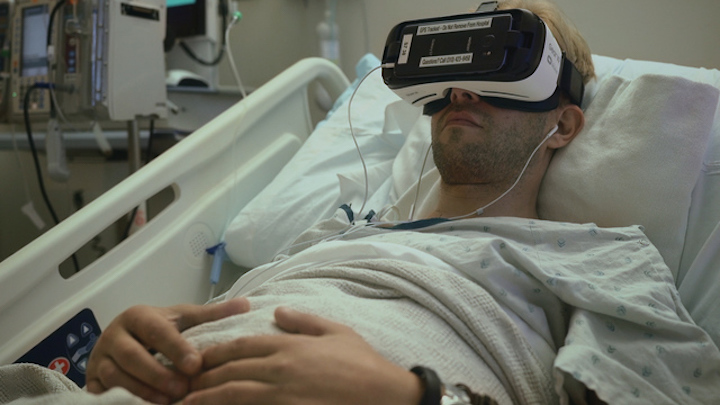Category: Pain
-

Pain management via implanted, bioresorbable drug delivery device
John Rogers has developed a wireless, self-powered, bioresorbable implant for programmed drug delivery, enabling precision pain management. When exposed to an external light source, the implant’s wavelength-sensitive phototransistor opens a gate, releasing a pre-loaded reservoir of a drug into the body. It dissolves after the regimen is complete, eliminating the need for surgery to remove…
-

AI driven, music-triggered brain state therapy for pain, sleep, stress, gait
The Sync Project has developed a novel, music-based, non-pharmaceutical approach to treating pain, sleep, stress, and Parkinson’s gait issues. Recent studies showed Parkinson’s patients improved their gait when listening to a song with the right beat pattern, and post surgery patients used 1/3 the amount of self-administered morphine after listening to an hour of music.…
-

EEG detects infant pain
Caroline Hartley and Oxford colleagues studied 72 infants during painful medical procedures. Using EEG, they found a signature change in brain activity about a half-second after a painful stimulus. They seek to understand its use in monitoring and managing infant pain, as well as the use of EEG in adult pain treatment. EEG is more precise than current heart rate,…
-

VR therapy could reduce acute and chronic pain
Cedars-Sinai’s Brennan Spiegel has published a study showing that VR therapy could reduce acute and chronic pain. 100 gastrointestinal, cardiac, neurological and post-surgical pain patients with an average pain score of 5.4 were included. Fifty patients watched a 15-minute nature video. Fifty patients watched a 15-minute animated game with VR goggles. The patients who watched…
-

VR + sound to control pain
In a recent study, York St. John University researchers have demonstrated the use of virtual reality headsets to control pain. Discomfort was further reduced when sound was incorporated into the process. In the experiment, a small group of adults submerged one hand in ice water while playing an Oculus VR based game, with and with…
-

Wearable monitors physiological signs of pain
When we experience pain in a clinical setting, we are asked to rate it on a scale of 1-10, which guides our treatment plan. This method is obviously imprecise, but also irrelevant if a patient cannot communicate or is under anesthesia. Medasense is developing a finger mounted wearable with a sensor that records physiological signs…
-

Remote controlled nanowire drug delivery
Purdue researchers have created an implantable drug-delivery system using nanowires that can be controlled wirelessly. The nanowires respond to an electromagnetic field generated by a device used to control the release of a preloaded drug. Tubes and wires required by other implantable devices are eliminated, minimizing the risk of infection and complications. According to lead…
-

Pain relieving wearable, app
Cur is a wearable pain relief system, similar to Quell, (see ApplySci, 1/13/15) for people who respond to TENS. It uses uses electrical stimulation to stop pain at its source. The bandaid-like device sticks directly to skin, and all the modulation of electrical signals is automatically controlled by built in sensors. Users can also adjust the amount of stimulation…